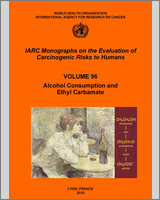| Kramer et al. (1987), Great Delaware Valley, USA, 1970–79 | 104 incident from the Great Delaware Valley Pediatric Tumor registry and the Cancer Research Center between 1970 and 1979; response rate, 74.8% | 101; selection through RDD; response rate, 57.1% | Telephone interview | Maternal drinking during pregnancy | | | Not specified | 90% CI reported; 1 drink=1 serving of beer, wine or liquor |
| | Any drinking ≥1 drink/day (frequent) | 36
9 | 1.44 (0.94–2.21)
9.0 (2.16–37.56) | |
| | | ≥3 drinks/day (binge) | 6 | 6.0 (1.26–28.54) | | |
| | | ≥1 drink/day or ≥3 drinks occasionally | 12 | 12.0 (3.14–45.82) | | |
| Bunin et al. (1994), Canada, USA, 1986–89 | 322 diagnosed before 6 years of age in 1986–89; identified through the Children's Cancer Group; response rate, 65% | 321; selected through RDD; 1:1 match; response rate, 74% | Telephone interview of the mother or father | Maternal exposure to beer during pregnancy | | | Income | *Crude odds ratio reported |
| Astrocytoma Primitive neurectoderma tumour | 10
12 | 1.4 (0.5–3.7)
4.0 (1.1–22.1)* | | |
| Hu et al. (2000), Northeast, Heilongjiang Province, China, 1991–96 | 82 consecutive incident (43 boys, 39 girls) intracranial primary brain tumours, ≤18 years of age; 100%; residing in Heilongjiang Province at the time of diagnosis; 100% histologically confirmed; participation rate | 3 individually matched per case; participation rate, 100% | Structured questionnaire (interview) administered to parents of all study subjects; history of parental liquor drinking obtained | Lifetime paternal liquor consumption (L)
Never
≤200
≥201 |
41
20
21 |
1.00
3.21 (1.43–7.22)
4.43 (1.94–10.14)
p for trend=0.0001 | Family income, mother's education, father's education | Similar associations for paternal age when started to drink liquor and numbers of years of drinking liquor; only one mother in the case group and two mothers in the control group reported drinking hard liquor. |
| Yang et al. (2000), Canada, USA, 1992–94 | 538 children newly diagnosed with neuroblastoma in 1992–94, ≤19 years old; 100% histologically confirmed; response rate, 73% | 504 mothers selected by RDD; 304 fathers directly interviewed; proxy interviews obtained for 142 (28%); 1:1 match; response rate, 72% | Structured telephone questionnaire to parents | Maternal drinking
Lifetime
Around pregnancya
1 month before conception
1st trimester
2nd trimester
3rd trimester
Breastfeeding |
253
235
205
96
60
58
54 |
0.9 (0.7–1.1)
1.1 (0.8–1.4)
1.1 (0.8–1.4)
1.2 (0.9–1.7)
1.6 (1.0–2.4)
1.4 (0.9–2.1)
1.0 (0.5–2.0) | Child's gender, mother's race and education, household income in the birth year | No association for paternal lifetime alcohol consumption, or before mother's pregnancy |
| Schüz et al., (2001), Germany, 1988–94 | Pooled analysis of 2 case–control studies (1988–93; 1992–94); total of 192; children; response rate, 83.1% | 2537; 2:1 match by gender and date of birth within 1 year; response rate, 71% | Questionnaire and telephone interview; same exposure assessment in both studies | Maternal alcohol consumption
Overall | | | Socioeconomic status, degree of urbanization | Odds ratio from a matched logistic regression on age, gender, birth year |
Never
1–7 glasses/ week | 140
38 | 1.0
0.84 (0.56–1.26) | |
| | | >7 glasses/ week
Stage I/II | 3 | 3.04 (0.75–12.2) | | |
| | | | Never
1–7 glasses/ week | 73
12 | 1.0
0.90 (0.45–1.80) | | |
| | | | >7 glasses/ week
Stage III/VI | 0 | – | | |
| | | | Never
1–7 glasses/ week | 39
23 | 1.0
0.88 (0.53–1.45) | | |
| | | | >7 glasses/ week | 3 | 5.23 (1.33–20.6) | | |
